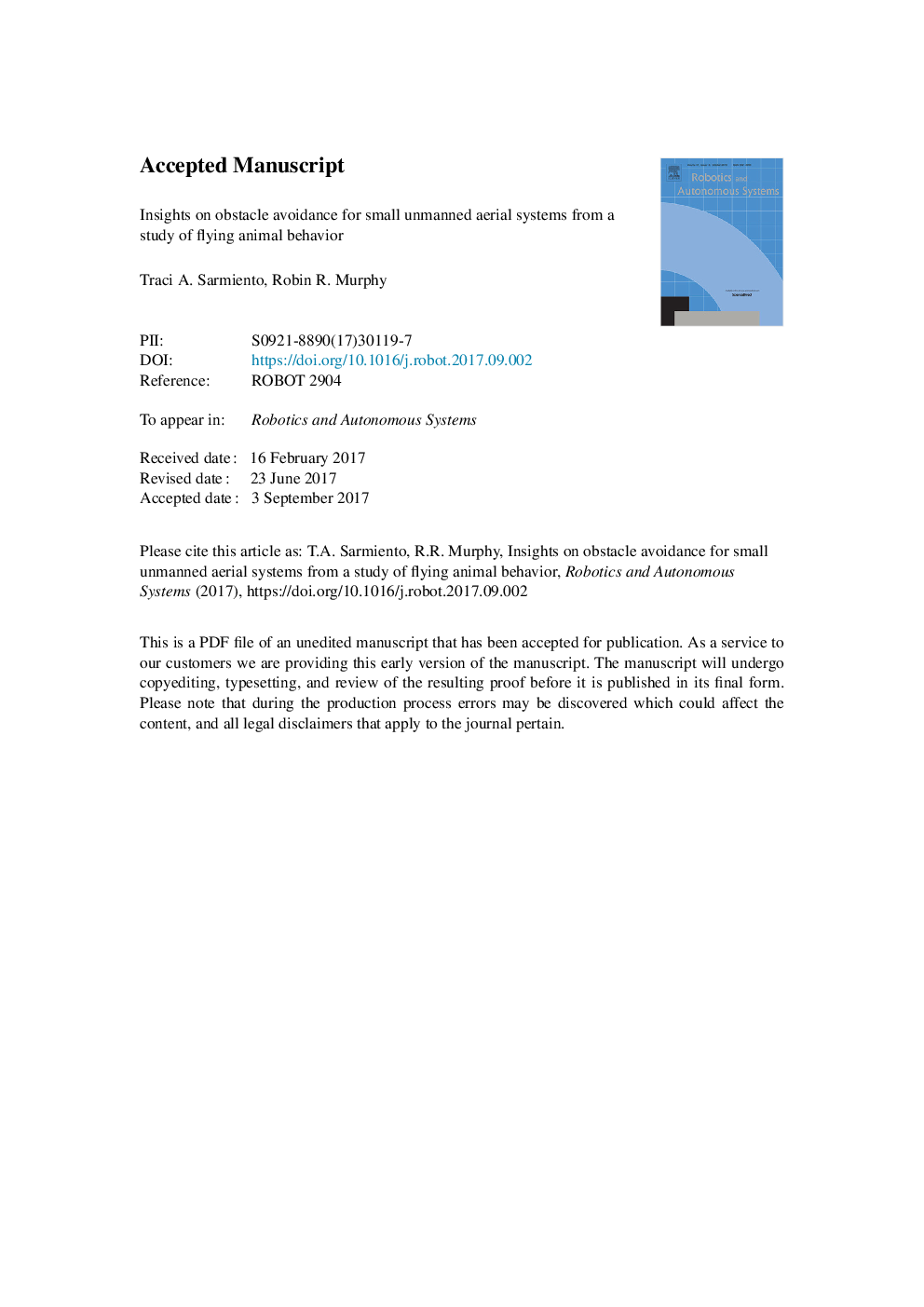| Article ID | Journal | Published Year | Pages | File Type |
|---|---|---|---|---|
| 6867370 | Robotics and Autonomous Systems | 2018 | 48 Pages |
Abstract
Thirty-five papers from the ethological literature were surveyed with the perception and reaction of flying animals to autonomous navigation tasks organized and analyzed using a schema theoretic framework. Flying animals are an existence proof of autonomous collision-free flight in unknown and disordered environments. Because they successfully avoid obstacles, self-orient, and evade predators and capture prey to survive, the collected information could inform the design of biologically-inspired behaviors for control of a small unmanned aerial system (SUAS) to improve the current state-of-the art in autonomous obstacle avoidance. Five observations were derived from the surveyed papers: sensing is done by vision in lighted scenarios and sonar in darkness, one sensor is always dominant, adaptive sensing is beneficial, no preference was identified for lateral versus vertical avoidance maneuvers, and reducing speed is consistently seen across species in response to objects in the flight path. Additionally, the questions of defining clutter and scale of speed reduction left unanswered by the literature were discussed. Finally, three rules for control of a SUAS in an unknown environment that restricts maneuverability were identified. These are the distance to begin maneuvers to avoid an obstacle in the flight path, the direction to adjust the flight path, and the role of centered flight in determining the adjustment.
Related Topics
Physical Sciences and Engineering
Computer Science
Artificial Intelligence
Authors
Traci A. Sarmiento, Robin R. Murphy,
